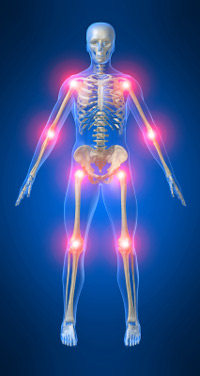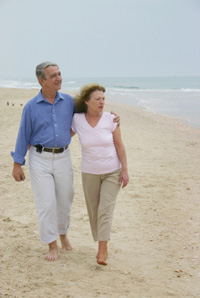Have you been told you need joint surgery? Then imagine for a moment that you can avoid joint surgery with a few simple injections. Platelet Rich Plasma Treatments (also known as PRP Injections, PRP Therapy, or PRP Prolotherapy) are treatments for acute or chronic musculoskeletal injury or pain that can help you avoid the pain, complications, and recovery time associated with joint surgery.

Platelet Rich Plasma Treatments can help to keep you running
Your blood platelets contain potent growth factors necessary to begin tissue repair and regeneration at the injury site. Concentrated platelets contain large reservoirs of growth factors that can greatly and naturally accelerate the normal healing process. The use of concentrated growth factors is considered by many to be an exciting and new cutting edge therapy that can stimulate tissue repair and regenerate weakened torn or damaged ligaments, ligaments, and joints.
Schedule Your Appointment Today!
The main difference between PRP Prolotherapy treatment and Dextrose Prolotherapy treatment is the solution being used. Dextrose Prolotherapy involves the injection of a proliferant (a mild irritant solution – dextrose, phenol, glycerin, etc.), which causes an inflammatory response that stimulates the healing process.
By contrast, the PRP treatment solution is derived from your own blood. A small amount of your own blood is drawn, and after filtering out the rest of the cells and plasma, a small amount of platelets remain. This highly concentrated amount of platelets — from 7 to 10 times that of normal blood — can be injected into the damaged areas and catalyze new soft-tissue growth.
The use of concentrated growth factors is considered by many to be an exciting and new cutting edge therapy that can stimulate tissue repair and regenerate weakened torn or damaged ligaments, ligaments, and joints.
Most organizations and the physicians associated with them teach Prolotherapy, and PRP agree that Prolotherapy should be tried first.
Since Prolotherapy can usually fix at least 80 – 85% of injuries, it is the first best choice. If healing is not attained with Prolotherapy, then PRP would be your next logical choice.
PRP, as used in Regenerative Orthopedics, is a non-surgical healing treatment for healing soft tissue. The solution is injected into the affected region to stimulate and enhance healing. PRP is your own blood concentrated so that more platelets (AKA growth factors) that are normally found in your blood are obtained.
PRP stands for Platelet Rich Plasma. Plasma is the fluid portion of blood that contains cellular components such as red cells, white blood cells, and platelets. The Harvest Method that OrthoRegen and Peter A. Fields, MD, DC uses concentrates the platelets 7-10 times of what is normally found in the blood. Other systems concentrate them, but to a lesser extent.
Weakened torn or damaged ligaments, tendons, muscle tears, menisci, or labrums are the most common soft tissue structures treated. PRP has also been effective in treating arthritis.

The patient’s blood is collected and then spun in a centrifuge specifically designed to concentrate platelets. Then, a local anesthetic is provided to the affected region. The PRP is then injected into the affected area.
PRP actually heals the injured region. Unlike pharmaceutical medications, like ibuprofen or cortisone, which may just take the pain away but cannot heal the injury.
Growth Factors are released from large quantities of activated platelets at the site of injury. This leads to a reaction that initiates a healing cascade. Growth factors stimulate and promote healing of weakened, torn, or damaged soft tissue such as tendons, ligaments, meniscus, or labrum.
Schedule Your Appointment Today!
Patients typically tolerate the procedure well, although post-injection soreness is sometimes experienced.
Two to four treatments are needed depending on the degree of injury and how long the injury has been there.
Typically about every 6 weeks if indicated.
For the first 48 hours, swelling and mild discomfort are typical in the injected area. Therefore, all patients are provided with pain medicine after PRP. By day 3, these symptoms will begin to resolve substantially.
Minimal side effects have been observed with treatment. Any stiffness or discomfort reported after PRP should resolve with time.
Most patients notice some element of improvement by 2-6 weeks after PRP treatment. Symptom improvement is slow and subtle as days and weeks pass, with the usual reports of original pain being lessened over time. Increased endurance and strength are typically reported.